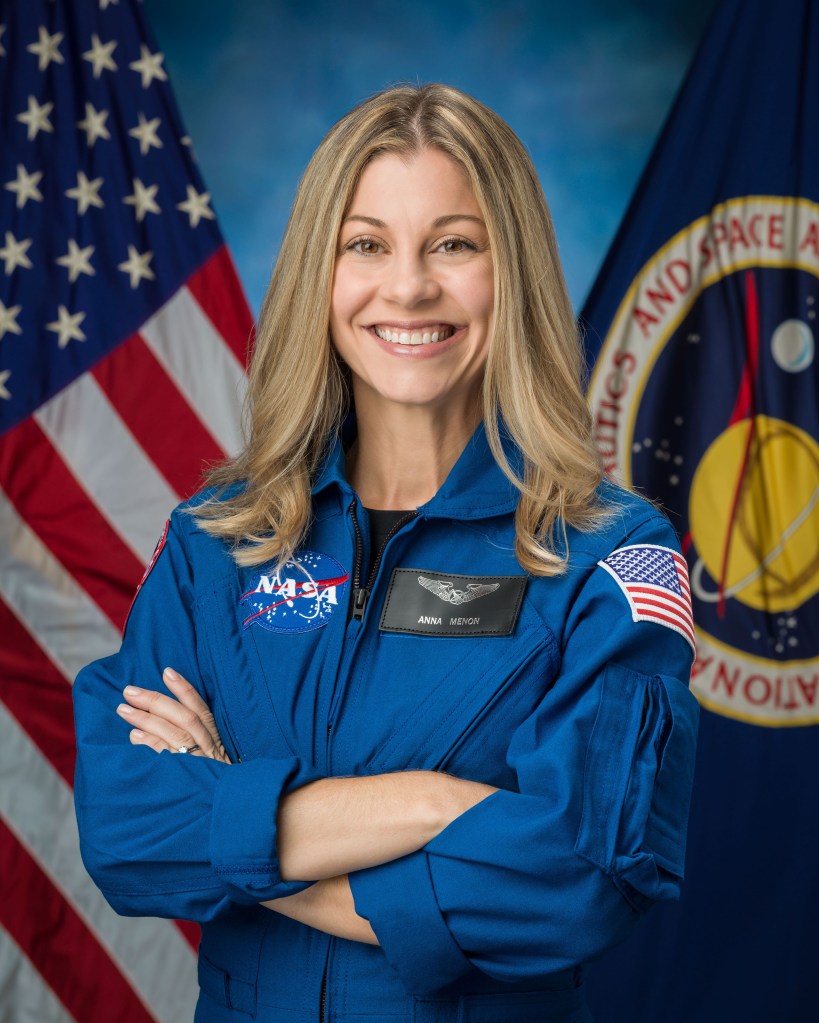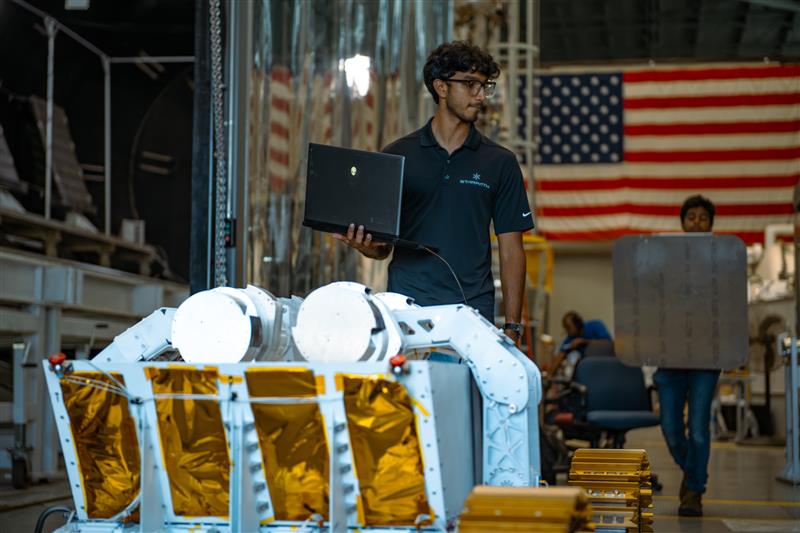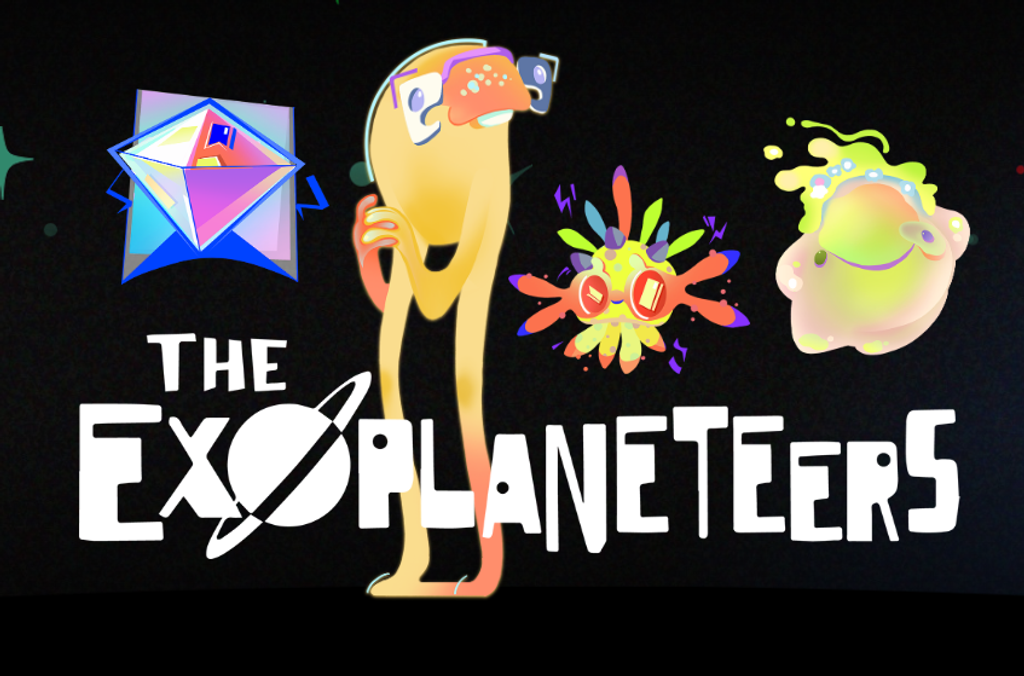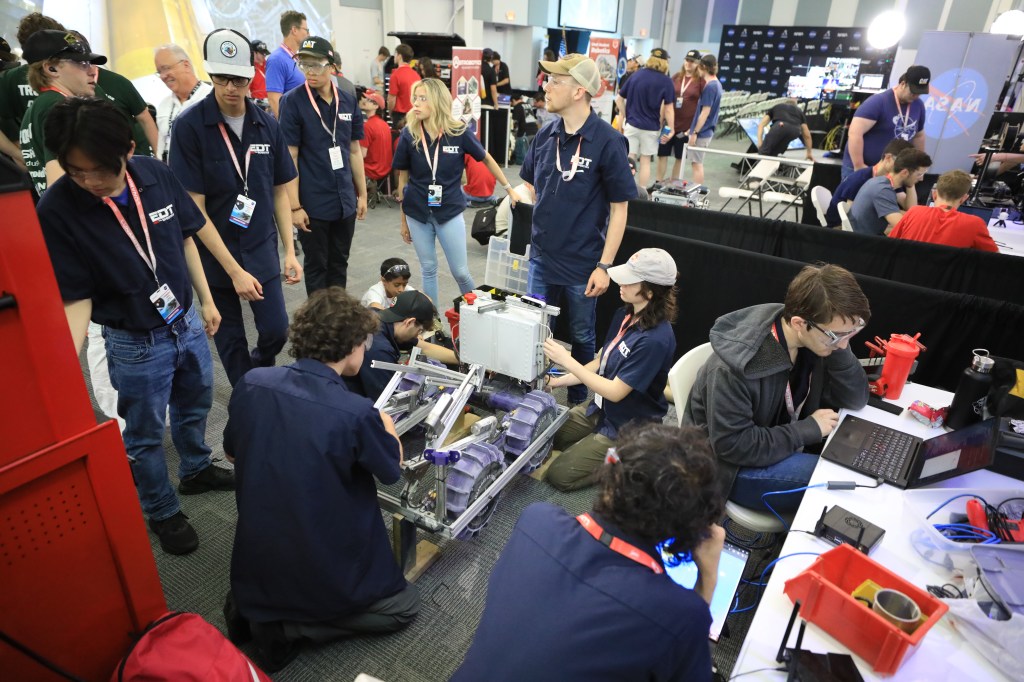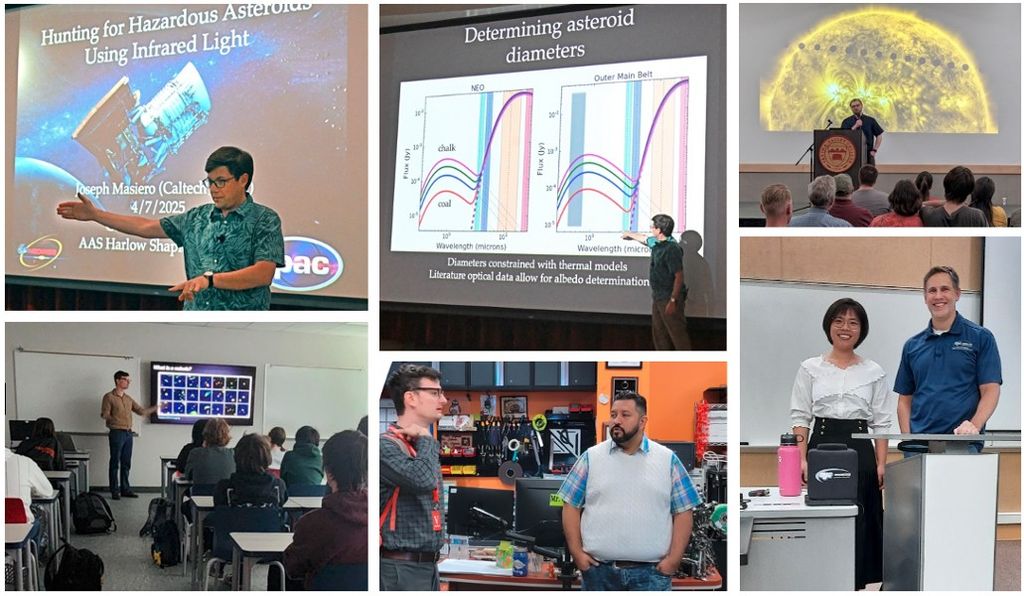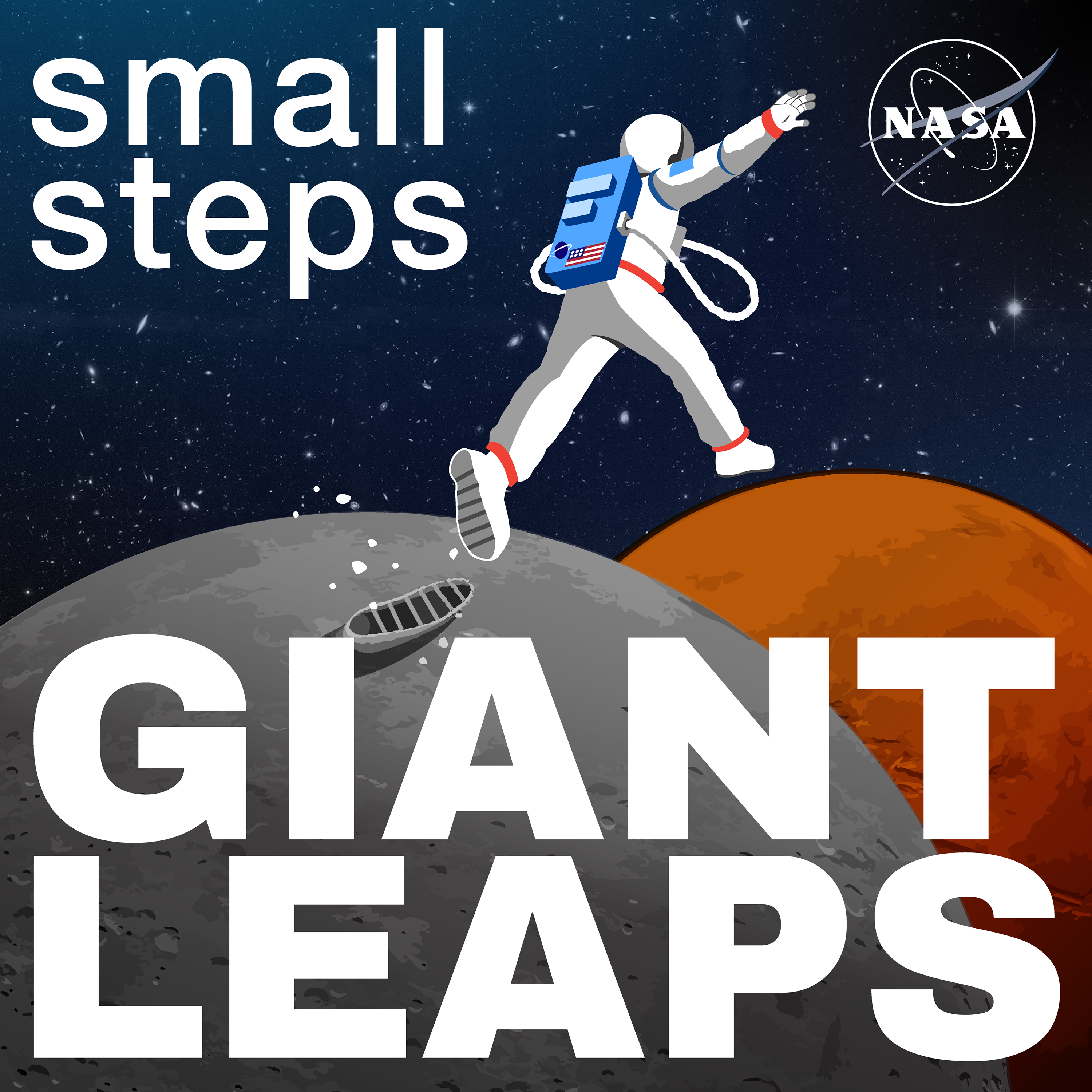Steve Clarke, the Deputy Associate Administrator for Exploration in NASA’s Science Mission Directorate, discusses commercial payload delivery services to the Moon.
Steve Clarke: I think this particular initiative, the CLPS initiative, is on the leading edge for how we get to the lunar surface.
These are not going to be NASA missions. They are going to be the commercial company delivery missions.
This CLPS model could be quite an asset for NASA overall, for not only the science and robotic missions, but for the human exploration missions as well.
Deana Nunley (Host): Welcome to Small Steps, Giant Leaps, a NASA APPEL Knowledge Services podcast that taps into project experiences to share best practices, lessons learned and novel ideas.
I’m Deana Nunley.
NASA’s Commercial Lunar Payload Services initiative is leveraging capabilities of commercial industry to quickly deliver science and technology payloads to the Moon and help NASA prepare for human missions.
Steve Clarke is the Deputy Associate Administrator for Exploration in NASA’s Science Mission Directorate and joins us now to discuss the CLPS initiative.
Steve, thank you for being our guest.
Clarke: Well, thank you, Deana. I enjoy doing these types of interviews, and this will be interesting and fun, I think.
Host: Yes, I think it’s going to be fun to talk about CLPS. We’re excited to have you on the podcast and eager to hear about this initiative. How did the CLPS model originate?
Clarke: About two to three years ago, a couple of us were talking about how we could conduct science on the lunar surface in a new and innovative way. What I mean by that is as opposed to putting out our traditional contracts to have industry build spacecraft and put instruments onboard and send them to the Moon, we wanted to take a look at the commercial industry and what was available out there, what kind of ideas had been floated.
We started looking at some of the companies that originally were in the Google X Prize competition. As many of you may know, the Google X Prize didn’t actually award someone to fly to the surface of the Moon, but a lot of companies came up with some novel ideas of building small commercial landers to go to the lunar surface.
So, we put out a request for information to see if some of those companies were still viable, and if there were other companies out there that were thinking the same. And sure enough, we got a very large amount of input from these companies. There was a lot of interest out there. So, based on that, we sat back and said, “OK, let’s look to see how this would actually become something that the Science Mission Directorate could use.”
Now, if we leverage our commercial partners, and we actually look to buy a ride and have these commercial companies basically take our instruments from Earth and deliver them to the lunar surface, and we can operate our instruments through those landers, we would actually be jumpstarting the commercial lunar lander business.
So, we talked with our Commercial Crew Program colleagues. We also talked to the NASA folks that were involved with developing and they’re now running the Commercial Cargo programs. We also talked to our Launch Services Program colleagues to find out some lessons learned, on what they’ve learned throughout their program lives. Commercial Crew is just getting started as far as we’ve had a couple test flights, and they’re still learning some lessons there.
So, we developed this model of getting these commercial contractors onboard, on what we call an IDIQ, or indefinite delivery/indefinite quantity type contract. NASA uses these in other programs, where companies qualify and are put into what we call a pool of prequalified contractors. Then we would put out task orders, which are specific tasks that we would like for these companies to bid on. In our case, it was delivery task orders.
So, we realized that we would be accepting additional risk, particularly since NASA would not be involved with the design of the landers. We would merely be providing instruments and technology payloads to these commercial companies. We would be involved in the integration and testing of those instruments, and we would gain some knowledge in the lander designs, but we, NASA, would not be helping them with the design of the landers.
So, in November of 2018, we awarded the first nine contracts to this IDIQ contract called CLPS, which is the Commercial Lunar Payload Services contract. So, these nine companies were now in the pool of providers, as we say, and they are eligible to bid on delivery task orders. In fact, we released our first request for deliveries, and in May of 2019 we awarded the first delivery task orders to Astrobotic and Intuitive Machines.
So, we now have two commercial companies that we are going to be providing instruments to take to the lunar surface next year, 2021. So, we don’t have missions – or I should say deliveries – behind us yet, but these are going to be the first ones. In fact, I want to emphasize these are not going to be NASA missions. They are going to be the commercial company delivery missions.
NASA is not going to be the only customer onboard these deliveries. There are other customers that are flying along with these commercial companies.
Host: Are there other differences that set CLPS apart from traditional NASA approaches?
Clarke: So, as I stated in the beginning, instead of us going down the traditional cost-plus type contracts, where we put out a request for proposal and we have companies bid on it and then build a spacecraft for us, which NASA would own, we went a different route and decided to see if we could jumpstart the commercial lunar lander business by going in an innovative way of buying commercial services.
NASA is beginning to do more of this. In the International Space Station world, eventually we’re going to be turning over the ISS to a commercial entity to deliver orbital services from the ISS platform. We’re also looking at commercial services to buy seats on spacecraft to take our astronauts to the International Space Station.
So, it’s an interesting time, where commercial strengths, commercial capabilities are actually real now. In the past, we didn’t have these types of capabilities to look at, to try out. Now we do. So, now we’re going down this route, and the CLPS contract is actually leading this innovative effort. If indeed it’s successful, which I’m confident it will be, I think we’re going to see a huge expansion of commercial services that are going to be provided not only to NASA, but to other government agencies and even some of our international colleagues as well.
Host: With NASA’s role in these missions changing significantly, what’s it like for you and your team to adjust to the changing roles and responsibilities?
Clarke: That’s a really good question, Deana, because NASA engineers are used to being involved in the design and reviews of the design of launch vehicles and spacecraft. So, the difference here is we don’t have any authority to influence the design of the landers. We don’t have a say in any of the design reviews that will occur. We are invited to these companies’ reviews, So, that we do have some insight into how the progress is going with the development of the landers, and of course we need to know the schedule of when we need to deliver our instruments and be ready to have those instruments set to go for integration onto these landers. So, it is a different role for NASA.
In the beginning, when we set this up, the team that we started bringing onboard, we had to talk about what our roles and responsibilities are. We also had discussions with our CLPS contractors as well that came onboard to the CLPS contract. In fact, we have several meetings with them monthly, actually, to talk about these types of things.
We’re learning from each other, which is really an interesting time. Knowing that they’re a commercial company, and there are some things we can ask about and there are other things that may be somewhat company proprietary, we’re learning how to interact with each other from a government/commercial partnership standpoint.
I can tell you it’s going very well, actually. There really haven’t been any issues or disagreements. It’s all been very collegial and it’s continuing to evolve. So, I would love to have this same interview in another year or so and tell you how things are going and how things have evolved. But NASA is taking on a different role with just buying a ride. We are accepting more risk and we’re actually excited about taking this risk.
If it is successful, which, again, I think it will be, we’re going to find that we have a much more cost-effective approach of getting our science instruments and technology development payloads to the lunar surface and, in the future, to lunar orbit, so that we can conduct science investigations at considerable savings in cost to the taxpayers.
Host: Steve, we would love to have you back on the show in about a year or so to give us an update on how CLPS has evolved at that point. You’ve talked about some of the goals the program has. What else are you trying to achieve through CLPS?
Clarke: As we get more successes under our belts with our commercial partners, I can see the capabilities that are offered to the agency to expand. In fact, just last year, in the first part of December, we brought five additional CLPS contractors on board and we called it an on-ramp. The reason I put out this on-ramp was I started seeing a need in more near-term to deliver heavier payloads to the lunar surface.
This is with my office working with the Human Exploration and Operations Mission Directorate and the Space Technology Mission Directorate, supporting the Artemis Program, not only the first human mission in 2024, but what type of technologies do we need to be able to utilize on the surface of the Moon, such as power stations, in situ resource utilization type payloads. We want to be able to see if we can take the water ice that we know is there and break it down into hydrogen and oxygen for breathing air, water for drinking water. Hydrogen, of course, is for rocket fuel.
We also know that there are water molecules in the regolith as well. So, we’re looking at prototypes to be able to take to the lunar surface and test these technologies out. We’re going to need landers that can take much heavier payloads. So, we brought on five additional companies, knowing that we’re going to want to start taking those heavier payloads sooner than we had originally planned.
So, I’d like to see the CLPS contract be used not only for our science instruments, which are much smaller in mass, but for some of the other heavier payloads, and even extending it into potentially pre-placement of tools and equipment for future human missions as well. So, again, this CLPS model could be quite an asset for NASA overall, for not only the science and robotic missions, but for the human exploration missions as well.
Host: So, CLPS becomes important for the Artemis Program.
Clarke: Yes, definitely. Talking with my human exploration colleagues, they’re already looking at being able to utilize those CLPS landers to deliver those payloads that I talked about. It’s already in their thinking now of being able to utilize that contract to do just that instead of having to take everything with us on, say, the Orion spacecraft or the Human Landing System, whatever that is going to turn out to be, on the lander itself, because that would just be more mass that would have to be launched on SLS or on a commercial vehicle. If we can put pre-placements in place using the CLPS contractors, then we’ve actually come up with a really, I think, neat way of doing human exploration and robotic exploration at the same time.
Host: Let’s talk more about current and upcoming activities. Could you share highlights of what’s going on and what’s ahead for CLPS?
Clarke: So, currently, we have the two task orders I mentioned before that were awarded to Astrobotic and Intuitive Machines. They continue to develop their landers for the missions next year, in 2021. So, we’re really excited about that.
In parallel with that, we have instruments that are being developed that will fly on the Astrobotic and Intuitive Machines landers. I had put out a call to the NASA centers to develop near-ready or ready-to-fly instruments, because we knew that we were going to be awarding those task orders for delivery fairly quickly. So, those instruments are being developed. In fact, the first one was completed just last week and is going into storage, awaiting the timeframe when it needs to be delivered to Astrobotic.
I also put out a call to the broader science community and the technology development community to develop additional instruments that we will be looking to fly in 2022. In fact, just last month we released the task order out for bid for the CLPS providers to provide us input on how soon they could deliver these next set of instruments and at what cost. So, we are looking to award those delivery task orders, most likely in the end of March/early April timeframe. So, we will have an additional delivery task order awarded for the first part of 2022.
Then we’re going to release another task order for a very special payload called VIPER. VIPER stands for the Volatiles Investigating Polar Exploration Rover. I say this is special because this is an actual golf-cart-sized rover that NASA is developing to send to one of the lunar poles, where we know there is water ice trapped in the permanently shadowed regions of the craters there, where they never see sunlight.
This rover is going to have three instruments onboard and a drill, and the rover will move to different locations within a several kilometer diameter and drill down, up to a meter into the lunar surface, and then pull samples of the water ice, pull it up so that our instrumentation can look at the water ice and really characterize what are we seeing, because we only know that there is water ice from data from lunar orbit. Now we want to go do what we call the ground truth, where we actually touch the ice and look at it with instrumentation so that we know what’s the composition of this water ice.
So, that delivery task order will be released very soon. We hope to award that in the May timeframe. Then we’ll put out another delivery task order later this year for some additional instruments that will fly in late 2022.
So, I hope you’re getting a sense here that we’re going to be putting out requests for deliveries, for two deliveries per year, starting next year, in ’21, which, like I said, we’ve already awarded. So, we hope to have two deliveries per year, every year. So, we’ll put out instrument calls once a year so that we can continue to build up that pipeline of instruments to take to the lunar surface.
Host: Steve, are you getting to apply lessons learned from previous NASA programs?
Clarke: Yes, we are. We certainly applied the lessons learned from other commercial partnerships that NASA has started when we created the CLPS contract. I think this particular initiative, the CLPS initiative, is on the leading edge for how we get to the lunar surface. So, I would answer it this way. We’re learning lessons every week working with our commercial partners, and we are sharing our lessons learned with the rest of the agency as we move along.
There are other commercial initiatives that the agency is considering, and they’re certainly looking at CLPS as a source of how to do things with commercial partners and what we’re learning.
Now with that said, we continue to reach out to our Launch Services Program colleagues, our Commercial Crew and Commercial Cargo colleagues as well, to continue that dialog, to incorporate any lessons learned that might apply to what we’re doing here. So, it’s certainly not a one-way communication thing between our other NASA programs, but what’s unique is we’re now providing some initial lessons learned as we’re developing this initiative to our other programs as well.
So, it’s a very exciting time. I’m very energized by this commercial partnership. We’re learning all the time.
Host: Earlier in the conversation you mentioned our international colleagues and their interest in this. Is the new model gaining traction in the international community?
Clarke: Yes, it is. In fact, I’ve had several discussions with many of our traditional international partners and even some emerging ones as well. For instance, NASA has longstanding relationships with the Japanese Space Agency, JAXA; the European Space Agency; the Indian Space Research Organization, ISRO. They are very interested in this CLPS model.
Some of the discussions I’ve had is they would like to fly some of their instruments on our Commercial Lunar Payload Services. So, some of those discussions continue to mature. And some of our international partners are looking at flying landers to the Moon, and we’re talking about providing NASA instruments to their missions as well.
I also mentioned some emerging space agencies. Here’s a for instance, UAE, the United Arab Emirates. They have a very active and growing space program. In fact, NASA flew their first astronaut up to the International Space Station last year. They are now also developing, in partnership with other international colleagues, lunar landings, lunar rovers. They have reached out to us and asked if we would like to collaborate on those missions and future missions.
So, if I could guess at a number, I’ve probably had discussions with over a dozen international space agencies that are interested in not only flying with us on CLPS, but also looking for NASA to contribute to their future lunar missions as well. So, again, very exciting times to work not only with our commercial partners, but to work with our international partners as well.
Host: Is CLPS facing any program management challenges that might be helpful for other PMs to hear about?
Clarke: This is interesting when it comes to basics of project and program management. Typically, you’re looking at cost, schedule, risks, and all of those have to be really integrated well for mission success. Of course, I don’t want to forget about systems engineering.
We have to use those skill sets in a different way with this commercial partnership. As I mentioned earlier in our discussion, we don’t have the level of insight that we typically do into the lander itself. I also mentioned that we’re accepting additional risk.
So, with that, we have to now look at what information do we have and do we get from our partners, our commercial partners. And how do we ask the right questions so that we have a better sense of, “Are the companies looking at what we consider the higher risk areas of building a lander and actually landing it on the surface of the Moon?” So, that’s where we have this unique relationship with our commercial partners. So, we have to apply our systems engineering expertise to be able to ask the right questions, but we can only go so far into the depth of the technical design.
I will tell you that our commercial partners have been very transparent and open with us, and we certainly expect that to continue with Astrobotic and Intuitive Machines, and we hope future awardees of these task orders I’ve talked about will be as transparent and open as well.
So, I think really from a program management standpoint the risk area is a particular focus that we have to look at with our commercial partners. Then, of course, the whole system engineering and integration of our instruments onto the landers and how they’re going to operate. For instance, there are other customers that are going to be flying on these landers.
So, we are looking to our CLPS providers to ensure that our instruments can operate safely and achieve the science objectives that those instruments are being built for, such as we certainly wouldn’t want our instrument to be placed in a location where another customer’s payload is in our field of view of what we’re trying to look at. So, the responsibility is on the CLPS providers to ensure that our requirements for the operation of that instrument on the lunar surface is not impacted by another customer’s payload – and vice versa. The commercial lunar payload services contractors have to ensure that all of the customers’ requirements are being met. So, that’s quite an integration challenge on their part.
We, from the NASA side, will help where we can, based on our own instruments, help them meet that challenge, to ensure that not only NASA instruments will operate safely, but that we don’t impact other customers as well. So, risk, system engineering and integration are key focus points here that typically project managers and program managers have to focus on.
Cost is really not that much of an issue because these are firm-fixed price contracts. I don’t think I mentioned that before. So, when we awarded the two contracts to Astrobotic and Intuitive Machines, we accepted the cost proposal that they provided us. Since that’s a firm-fixed price, that is the total cost that we the government are going to pay for these services.
Now, certainly, if things come up in the future that might be out of the control of the commercial services people, let’s say – and I hate to bring this particular example up, but we’ve experienced it before. If, by chance, there is a government furlough, well then certainly the contractors would have a perfectly good argument to say, “Look, we weren’t able to talk to the government because you were on furlough. So, we would need some additional money because the schedule got delayed.” That’s just a hypothetical, but that’s a potential where we might have to negotiate some additional cost above the firm-fixed price.
So, that’s something that’s not expected, but you have to be prepared for. So, that’s another thing that program and project managers have to be ready for, the unexpected.
Host: This has been incredibly interesting. Steve, thank you for joining us on the podcast.
Clarke: And thank you, Deana. Thank you for having me on the podcast. As you can tell, I’m very energized by this commercial partnership that we have going. Stay tuned for next year with those two landings. We’re really looking forward to enabling our commercial industry to provide commercial services to NASA. I look forward to talking with you again in the future.
Host: And we’ll look forward to getting an update on CLPS activities in a future conversation on the podcast.
You can find more information about CLPS and other topics Steve mentioned via links on our website at APPEL.NASA.gov/podcast. Steve’s bio and a show transcript are also available.
If you haven’t already, we invite you to take a moment and subscribe to the podcast and tell your friends and colleagues about it.
As always, thanks for listening to Small Steps, Giant Leaps.









